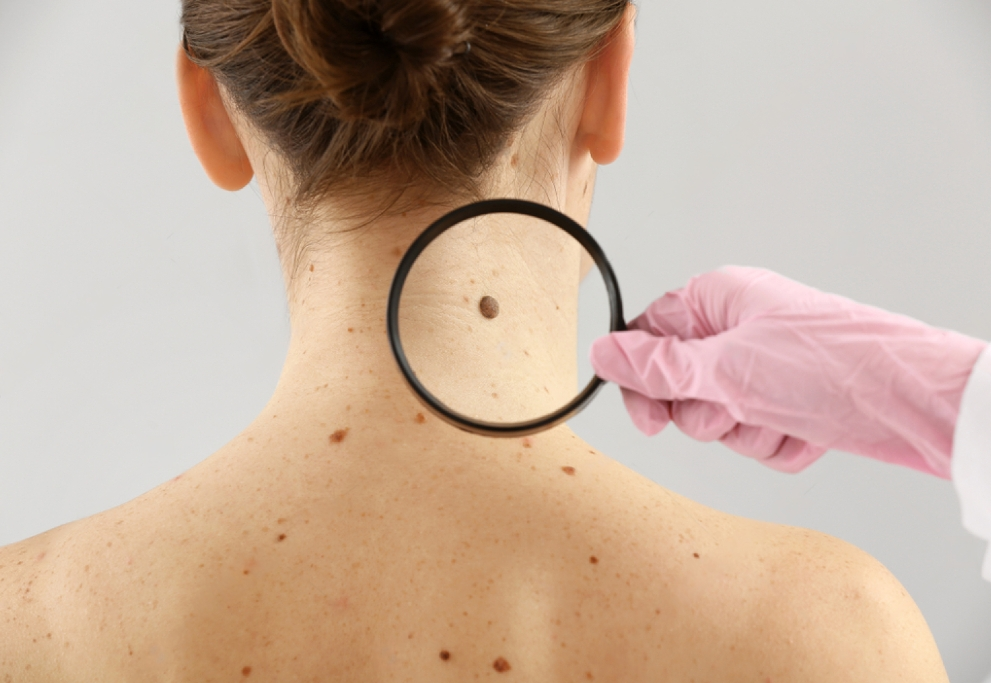
As we age, our skin changes, including the development of moles. Mole assessment becomes increasingly important for aging skin to detect any signs of skin cancer early on. This article explores the specifics of mole assessment for aging individuals, highlighting key considerations and practices to maintain skin health.
Understanding Mole Development with Age
People may have more moles on their skin as they age because of a combination of hereditary and sun exposure factors. Age also raises the chance of skin cancer, even though the majority of moles are benign. To track changes in current moles and identify any new ones that might be worrisome, mole evaluation regularly is essential.
Importance of Regular Mole Checks
It’s crucial to regularly check for moles as part of skin care for aging. To find any anomalies early, dermatologists advise self-examinations at home and routine professional examinations. If skin cancer is found, early detection through mole inspection can greatly enhance treatment results.
Characteristics of Normal Aging Moles
Over time, typical aging moles frequently alter in size, shape, or color. Even though these modifications are mostly benign, mole evaluation should be used to keep a close eye on them. To detect any warning indicators, dermatologists assess moles using a set of criteria, such as the ABCDEs (asymmetry, border irregularity, color variation, diameter, and evolving).
Skin Cancer Risks for Aging Individuals
Because of increasing sun exposure and decreased skin suppleness, aging skin is more susceptible to skin cancer. People with fair skin, those with a history of sunburns, and those who have been exposed to excessive UV radiation are most vulnerable. Mole examination reduces these risks by early detection of possible skin cancer.
Techniques Used in Mole Assessment
Dermatologists evaluate moles in elderly patients using a variety of methods. In addition to visual assessment, dermoscopy—a non-invasive device that enlarges the skin’s surface to enable closer examination of moles—remains essential. On worrisome moles, biopsies may be done to confirm or rule out malignancy.
Monitoring Changes Over Time
Older people must get their moles regularly checked throughout time. Any changes to a mole, such as rapid development, bleeding, itching, or color changes, should be evaluated by a dermatologist at once. Early diagnosis and successful treatment can result from prompt action through mole evaluation.
Lifestyle Factors and Mole Assessment
Mole’s growth and skin cancer risk are influenced by lifestyle decisions including sunscreen use and sun exposure patterns. To maintain skin health and lower their risk of cancer, older people should engage in sun-safe behaviors and routine mole checks.
When to Seek Professional Help
A dermatologist should be consulted right once for any concerns regarding moles, including any new growths or modifications to preexisting moles. If an elderly person wants a complete mole examination and peace of mind about the condition of their skin, they should not be afraid to seek professional assistance.
Tips for Effective Mole Assessment in Aging Skin
As aging progresses, it’s essential to adopt specific strategies for effective mole assessment:
- Regular Self-Examination: Perform self-checks once a month to keep an eye on current moles and spot any changes. Examine places that are difficult to see, including the scalp or back, using a mirror.
- Use of Dermoscopy: Dermoscopy provides an enlarged view of the skin’s surface, which improves mole assessment. Using this equipment, dermatologists can closely inspect moles for indications of cancer.
- Know the ABCDEs: Learn the ABCDEs (asymmetry, border irregularity, color variation, diameter more than a pencil eraser, and developing features) for mole evaluation. A dermatologist appointment should be prompted by any changes.
- Annual Professional Evaluation: Make an appointment with a dermatologist for a yearly mole assessment, particularly if you have a history of sun exposure or a large number of moles. Expert assessments guarantee comprehensive examinations and timely identification.
Addressing Common Concerns About Mole Assessment
Myth: Mole Removal Always Leads to Scarring
Fact: The danger of scarring is reduced when a dermatologist removes moles properly. Procedures such as excision and shave removal are designed to maintain the appearance of the skin.
Myth: Only New Moles Are Worrisome
Fact: Skin cancer can arise from moles that are either fresh or old. It is essential to conduct routine mole assessment monitoring to identify any changes that may indicate malignancy.
Myth: Mole Assessment Is Only for Younger Individuals
Fact: People of all ages are susceptible to skin cancer. Mole assessment is a valuable tool for the early detection of probable skin cancer in older adults.
The Role of Lifestyle Choices in Mole Assessment
Healthy lifestyle habits can mitigate skin cancer risks associated with aging:
- Sun Protection: Look for shade during the hottest parts of the day, wear protective clothes, and use sunscreen every day.
- Avoid Tanning Beds: UV exposure from tanning beds increases skin cancer risks, especially for aging skin.
- Frequent Check-Ups: To track changes in skin over time, including mole assessment in your regular physical examinations.
Conclusion
Mole assessment is essential for aging skin since it guarantees prompt intervention and helps discover skin cancer early. Aging people can reduce the hazards connected with moles and maintain skin health by being proactive and knowing the necessity of routine mole exams. Maintaining healthy skin as we age requires a full mole assessment, which can be obtained by consulting a dermatologist.